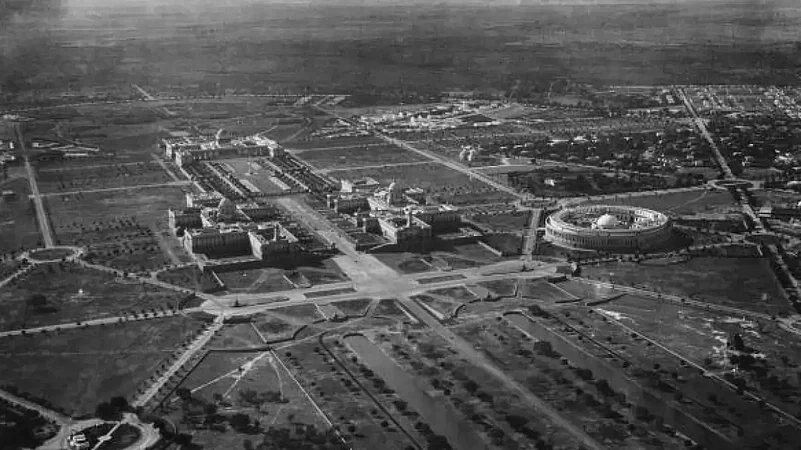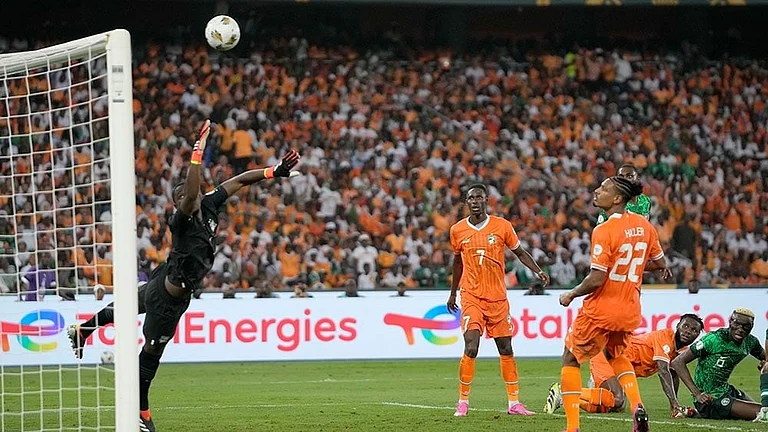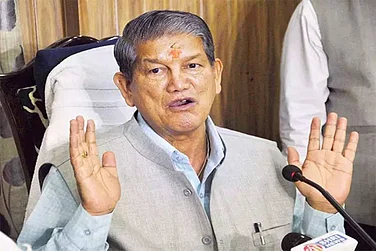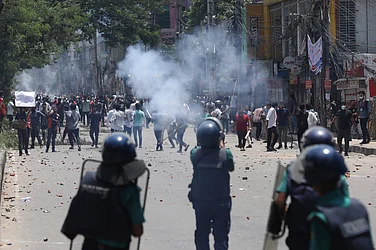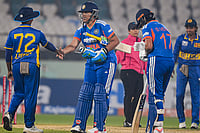A good performance on the floor of Lok Sabha is not necessarily a passport to re-election for Indian parliamentarians. Of the top 10 performers in the 14th Lok Sabha (2004-09) from the perspective of attendance, questions asked, debates participated in, and private bills introduced, only four returned to the 15th Lok Sabha (2009-14). Of the top 10 performers during the next term, only five returned to the 16th Lok Sabha (2014-19). In fact, five-time MP and Congress Lok Sabha leader Adhir Ranjan Chowdhury from West Bengal has been quoted as saying that if an MP wanted to make a name inside the Parliament, he or she could risk losing the next election.
That is because the more one is focussed on the legislative duties of a parliamentarian, the more the representative gets disconnected from his or her constituency. If one of the reasons is the huge size of constituencies that a Lok Sabha MP has to cater to, the other is the lack of institutional support provided to parliamentarians for their research and reference work. Ultimately, MPs tend to prioritise constituency work over legislative, a trend that leads to the weakening of Parliament as an institution.
Such inverse relation between legislative work and winnability is among the factors discussed in political scientist Ronojoy Sen’s book House of the People: Parliament and the Making of Indian Democracy as contributors to a gradual decline of the Parliament over the years. Published by the Cambridge University Press, this 312-page book was conceptualised by the author as a ‘biography of the Parliament’ and it does quite a comprehensive job in this regard — narrating the genesis and growth with a range of data, analysis, and global perspective.
Decline, however, is not the only thing that has happened to the Parliament over the past seven decades. It has also stood witness to broader democratisation of the space with some visible changes in its composition and the way the member behaved.
Sen’s portrayal reveals a few distinct phases: the Jawaharlal Nehru years (1952-64) when the Opposition was mostly minuscule and yet the Parliament played a central role, the Indira Gandhi years (1967-77) when deliberate attempts were made to reduce the role of the Parliament, the coalition years starting in the late 1980s when the democratic space widened, and the return of majoritarian, one-party rule since 2014 with Narendra Modi at the helm of affairs.
Among the significant changes the Parliament has stood witness to is the composition of its members. The average age of the MPs has increased from 46.5 years in the first Lok Sabha to 54 years in the 17th Lok Sabha (2019-). Their average educational qualification has increased with 78 per cent of MPs in the 17th Lok Sabha being graduates as against 58 per cent in the first Lok Sabha. Women’s representation has risen from 4.4 per cent in the first Lok Sabha to a little over 14 per cent in the 17th Lok Sabha. Lawyers have made way for ‘agriculturists’ and ‘social workers’.
Besides, the upper caste share of members has come down from 50 per cent in the first Lok Sabha to 40 per cent by 2004-09, with Brahmin share coming down from roughly 25 per cent in the first Lok Sabha to around 10 per cent by 2004.
Muslims, however, continued to remain underrepresented, achieving a high of 10 per cent in 1980-84 and a low of 3.5 per cent in 2014-19.
Of these, the author argues, changes in caste composition and profession reflect broader socio-political changes.
The change in caste composition of Lok Sabha members “mirrored the trend of the decline in prominence of Brahmin leaders in Indian politics and a concomitant rise in the influence of other upper and intermediate castes, such as Thakurs, Rajputs, and Jats in northern India and Vokkaligas, Lingayats, Kammas and Reddys in southern India”, Sen wrote.
The rise of non-Brahmin upper castes and intermediate castes helped continuance of the over-representation of these castes, as according to the NSSO 2004-05, they constituted only 31 per cent of the country’s population.
Therefore, even though the Mandal Commission report of 1990 did impact politics and effect a rise in OBC share among parliamentarians from 12 per cent in the first Lok Sabha to approximately 25 per cent in the ninth, OBCs continue to remain under-represented. The NSSO 2004-05 put the OBC population at 41 per cent. The over-representation of the upper castes is reflected in both the major parties, the BJP and the Congress.
“The deepening of democracy is reflected in the political and social composition of the parliament and parliamentary practices, but many of the failings of Indian democracy —economic and social inequality, corruption and majoritarianism, to identify a few— also find reflection in Parliament,” Sen writes.
While the share of lawyers has come down from 33 per cent in 1952 to 3.5 per cent in 2019, the share of ‘agriculturist/horticulturist’ has risen from 22.5 per cent in 1952 to 34 per cent in 2019, while the share of ‘political/social worker’ rising from insignificant in the first Lok Sabha to 35 per cent in 2019. Sen identifies the categories ‘agriculturist/horticulturist and ‘political/social worker’ as “fuzzy” — the first may reflect urban people owning large farmlands but not directly associated with cultivation, while the second in general refers to political wholetimers.
Besides, the first Lok Sabha had 12 per cent of members listed as ‘traders/industrialists’ but 2019 saw about 20 per cent of MPs listed as businesspersons. Broadly, these reflect the shift of the power centres from the urban professionals to those wielding economic powers in the rural hinterland.
One major change has been the increase in disruptions of parliamentary proceedings due to protests, leading to a loss of overall productivity of the House. The number of days the Lok Sabha sat has gradually come down, hours wasted due to chaos increased, and the number of Bills passed has decreased.
Perhaps a bigger concern is how the parliamentary committees function. Sen points out that, unlike the proceedings on the floor of the house, “the committee system, with some exceptions, has worked reasonably well, particularly with regard to bipartisanship”. Nevertheless, onwards 2014, there has been a sharp decline in the number of Bills being referred to the committees, which scrutinise different aspects of legislations. Similarly, bipartisanship of committees has also come under considerable strain, Sen notes, citing examples of how BJP members stalled important committee reports.
“The cracks in bipartisanship, along with the decline in Bills being referred, are the two most critical challenges facing the committee system,” writes Sen, while also pointing out the trend of passing an increasing number of Bills without any debate, and as ‘money Bill’ with the aim of bypassing the Rajya Sabha, where the BJP did not have a majority, and an increasing recourse to ordinances.
“This has also meant a shrinking of the importance and space given to the Opposition and showed up inability or unwillingness of the government, and its floor managers in parliament, to reach out to the Opposition and forge any sort of consensus,” he writes.
He attributes most of these post-2014 changes to Modi, whom he describes as ‘a reluctant parliamentarian’ in the sense that Indira Gandhi was —both of whom showed their preference for engaging directly with the masses, avoiding the institutions as much as possible— and describing both of them as “presidential prime ministers”.
Sen, however, concludes that the ‘damages’ to institutions caused since 2014 may have a more lasting impact than the Indira Gandhi years. “When Indira Gandhi was voted out, the next government undid much of the damage, at least to the Constitution. However, the current phase of one-party dominance and a powerful Executive has emasculated institutions, including Parliament, and could continue to do so for longer. It is likely to be that much more difficult to reverse the impact on Parliament and indeed Indian democracy,” Sen writes.






